Components for heating radiators: valves, control devices,
In order to always be warm and cozy in the house, the heating system must work without failures and failures. Modern market provides a large selection of heaters. But the high price of the battery is not yet a guarantee of stable operation, it is equally important to choose high-quality components for radiators. It’s not at all necessary that these knots are expensive, the main question is how much all these fittings correspond to a specific radiator model and type of system.
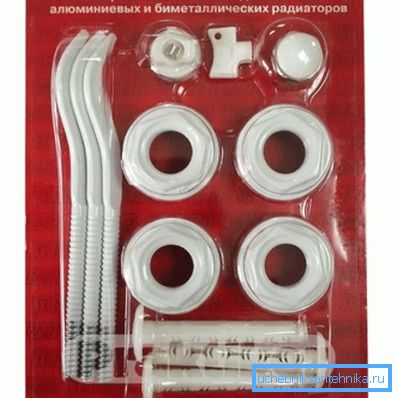
What products are produced
Asking price for radiators, it will be useful to immediately be interested in the cost, and most importantly, the availability and ease of execution of all components. After all, the necessary accessories are not always included in the product package.
Some manufacturers sell only bare batteries for the purpose of reducing prices. Or they put the cheapest parts into the obligatory set.
All accessories can be divided into several directions.

- The simplest is fasteners, brackets, awnings and legs for radiators. Often, all devices of this kind, which are sold with the battery, are designed for a solid foundation, concrete or brick. Owners of frame and wooden houses, as well as structures made of foam or aerated concrete, need to take care of fixtures separately.
- Various kinds of plugs, valves for radiators and other stop valves, As a rule, it is sold separately and must fully comply not only with the material of the battery itself, but also with the diameter and type of piping.
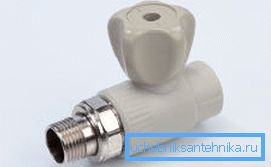
Important: special attention should be paid to the material from which the radiator is made. After all, for example, a plug for a radiator 3 4 (three quarters), on aluminum and bimetallic batteries can be visually the same. But the aluminum product is not able to withstand a lot of pressure.
- Another direction of the components is considered regulatory equipment.. Such things as a radiator heat distributor, as well as all sorts of meters and gauges are considered highly specialized products. Of all the associated equipment, this is the most expensive sector, so the choice here is better to entrust to professionals.
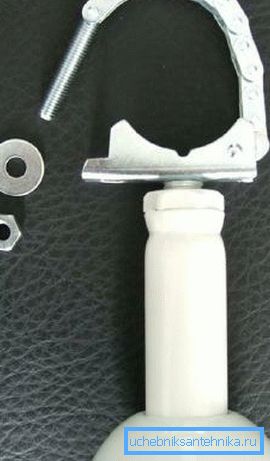
All these components and parts can be made of different materials and therefore have a different cost.
For the system to work clearly, the following conditions must be met:
- Any related fittings should not reduce the design characteristics of the system as a whole. Since we are talking about radiators, it is desirable that the heat transfer, at least, remains within the limits indicated by the instruction;
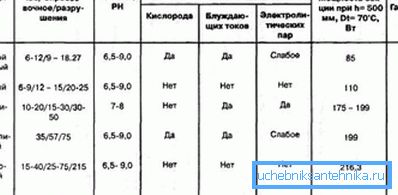
- Any professional knows that the quality of related fittings should not be lower than the quality of the product. In other words, the Chinese cap on the heating radiator is not installed on the Italian battery;
- And finally, if the repair or installation is done by hand, then buying a particular part, you must clearly represent the entire process of installation and further work of the site.
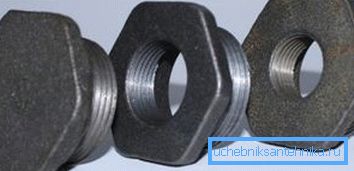
A few words about the main components
As already mentioned, all accessories are divided into several main directions. Most of the nodes are mandatory, without them the system will not work in principle. In addition, there are products that are desirable to install, but, in extreme cases, you can do without them.
Valves
The main element of valves is a crane. At the moment there are two types of designs. These are cranes with a needle principle of operation and an American for radiators, another American is often called semi-rotary or ball valves.
Needle-type valves allow you to smoothly adjust the flow capacity of the pipe. In the past, they were used everywhere, but with the advent of spherical structures, needle valves remained only in places with the need for a soft dosage of coolant.

The structure of a semi-rotary ball valve, or American, is a metal ball with a through hole close to the pipe section, which is enclosed in a spherical casing.
When the ball is rotated 90 ?, the hole combines the inlet and outlet of the pipe, so that the coolant flows freely. When turning back, the tube overlaps the walls of the ball.
Tip: Experts recommend using stainless steel ball valves. The price for them is somewhat higher, but such structures will stand at least twice as long as their silumin counterparts. It is possible to distinguish a stainless steel on a mirror internal surface of the core.
Regulatory devices
In a complex with shutoff valves, various kinds of regulating devices are widely used. As for the batteries, the most famous here is the jumper on the radiator, among professionals better known as the bypass.
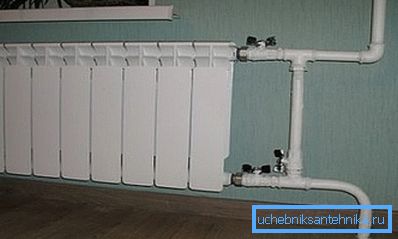
At its core, the bypass is a common pipe connecting the input and output of the battery, it is installed directly in front of the radiator. Tangible technological load this device does not carry, by and large, without it, you can do.
But by mounting the bypass in conjunction with the ball valves, the owner gets the opportunity to turn off the heating or replace the radiator at any minute. The coolant at the same time, bypassing the battery, go through the jumper.
Tip: as seen in the photo, the bypass is installed directly in front of the radiator. Between the jumper and the battery, ball valves are placed at the entrance and exit. So, the experts recommend installing an additional valve on the jumper itself, thus, the efficiency of the unit will increase.

Another regulating device is a flow guide for radiators with bottom connection. As is well known at the bottom connection, the inlet and outlet are either near or at opposite ends, but again at the bottom of the radiator.
Thus, the coolant moves along the line of least resistance, as a result, the upper part of the battery remains almost not involved. The guide in this case is a small section of pipe that is installed inside the battery, is put on the lead-in and directs the flow to the top. In this case, the efficiency of the unit increases significantly.
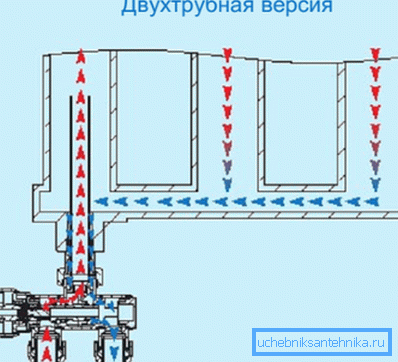
Counters and distributors
The most famous device in this sector is a radiator thermostat. This unit is a symbiosis of a thermal sensor with a needle-type valve. It is installed directly at the entrance to the battery, as a result, the owners have the opportunity to set a fixed temperature on a particular radiator.

For local networks in private homes, the problem of installing heat meters is not relevant, because the owners themselves regulate the operation of the boiler. Radiator counter distributor for high-rise buildings appeared relatively recently. This device is able to take into account the amount of heat supplied to each apartment.
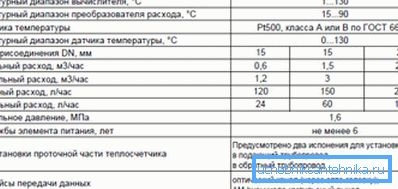
Residents of urban high-rises know that not always the batteries in their apartments give the proper temperature. With the advent of the distributor counter, complaints about overstated tariffs received legal confirmation, therefore, despite the high cost, the installation of such systems in urban high-rise buildings quickly pays for itself.

The video in this article provides an algorithm for installing some types of radiators.
Conclusion
Of course, if we are talking about hanging the battery on the wall or installing the legs, then this is quite easy to do on your own. But experts, for example, do not recommend installing a radiator counter with their own hands, even if you know the algorithm of work. Since such equipment requires a separate examination and sealing, which is the diocese of the relevant authorities.
